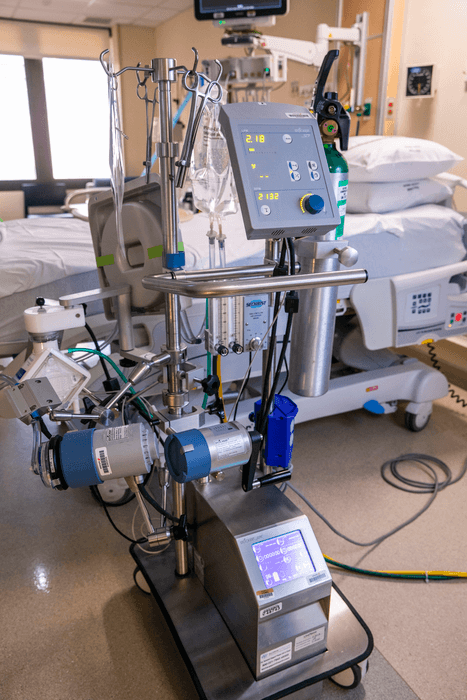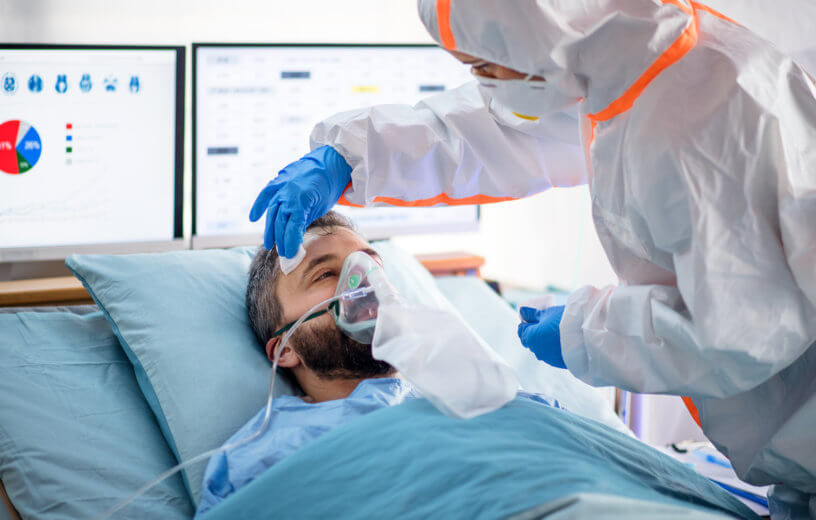NASHVILLE, Tenn. — Nearly 90% of COVID-19 patients who qualified for, but did not receive, a key type of life support due to a shortage of resources at the height of the pandemic died in the hospital, a recent study finds. Researchers say these otherwise healthy individuals lost their lives because hospitals did not have the resources to get these individuals proper care.
Researchers from Vanderbilt University Medical Center (VUMC) say that treatment is extracorporeal membrane oxygenation (ECMO). According to the Mayo Clinic, ECMO pumps a patient’s blood out of their body to a heart-lung machine which removes carbon dioxide. From there, it sends oxygen-filled blood back to the patient’s tissues. The process allows blood to bypass the heart and lungs, giving those organs a chance to rest and heal.
Unfortunately, not everyone who needs ECMO will be able to get treatment due to limited capacity and equipment in hospitals. In a review of ECMO-eligible patients at VUMC during one of the peaks of the pandemic in 2021, researchers found nine in 10 young adults with no pre-existing health problems died if they did not receive the treatment. Meanwhile, only 43 percent of ECMO-eligible patients who received the treatment died.
“Even when saving ECMO for the youngest, healthiest and sickest patients, we could only provide it to a fraction of patients who qualified for it,” study leader Whitney Gannon says in a university release. “I hope these data encourage hospitals and federal authorities to invest in the capacity to provide ECMO to more patients.”

Hospitals feeling ‘strained’ and ‘overwhelmed’
Study authors explain that once doctors determine that it’s medically safe to use ECMO on a COVID patient, a separate assessment of the hospital’s resources takes place. Unfortunately, that numbers game can be a life-or-death decision for patients.
When health system equipment, personnel, or intensive care unit beds were not available, that patient did not move to the ECMO center for treatment. Of the 240 COVID patients in the study, 90 were cleared for ECMO. The average age of these patients was 40 and three-quarters were men.
Out of these 90 patients, however, only 35 ended up receiving ECMO in a specialized care center due to capacity issues. Simply put, the health system did not have the room for the other 55 COVID patients.
Of the 55 patients who did not receive treatment, 49 died from their illness. Meanwhile, 20 of the 35 patients receiving ECMO survived their coronavirus infection.
“Throughout the pandemic, it has been challenging for many outside of medicine to see the real-world impact of hospitals being ‘strained’ or ‘overwhelmed,’” says co-author Matthew Semler, MD, assistant professor of Medicine at VUMC. “This article helps make those effects tangible. When the number of patients with COVID-19 exceeds hospital resources, young, healthy Americans die who otherwise would have lived.”
“Because some patients die despite receiving ECMO, there has been debate about how much benefit it provides. This study shows the answer is a huge benefit,” adds senior author Jonathan Casey, MD, assistant professor of Medicine at VUMC. “This data suggests that, on average, providing ECMO to two patients will save a life and give a young person the potential to live for decades.”
The study is published in the American Journal of Respiratory and Critical Care Medicine.

